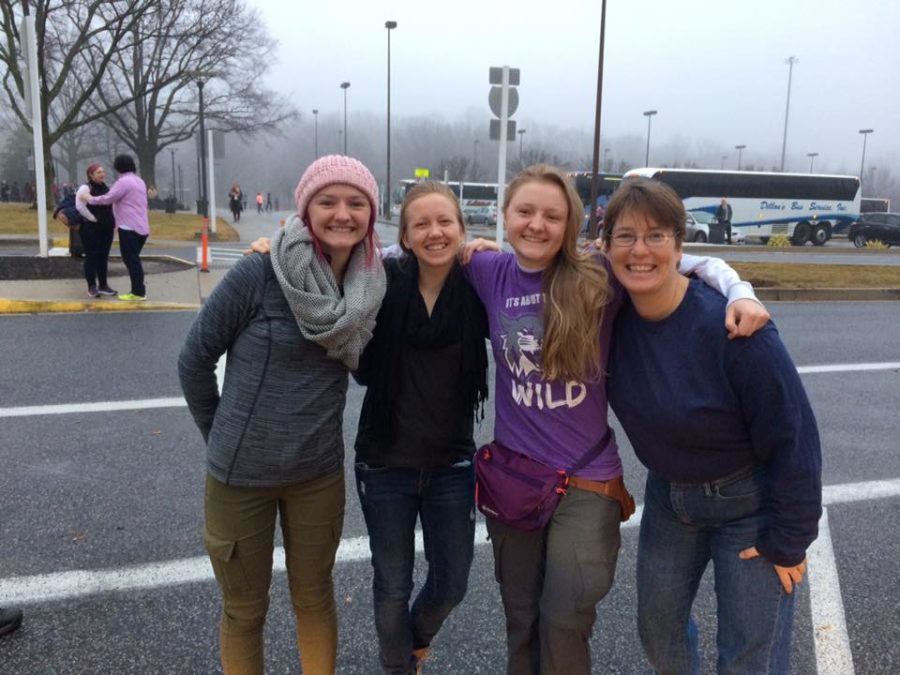[media-credit name=”Tyler Brown” align=”alignright” width=”300″] [/media-credit]Ogden’s 2nd Street is often associated with the Business Depot of Ogden. All the concrete and cars hardly reflect 2nd Street’s pioneer history, but amidst the clamor of commerce, a corner of pioneer heritage is still intact.
[/media-credit]Ogden’s 2nd Street is often associated with the Business Depot of Ogden. All the concrete and cars hardly reflect 2nd Street’s pioneer history, but amidst the clamor of commerce, a corner of pioneer heritage is still intact.
The Bingham/Stone Farm is the oldest working farm in Weber County. Anna Stone Keogh and her cousin, Dave Stone Montgomery, still maintain the historic property.
A working farm is a farm where crops are still planted and harvested. In past years, the Bingham/Stone farm has harvested hay, alfalfa, oats, wheat and pumpkin.
The Bingham family claimed the land in 1851. They and others, including the Stone family, built what came to be known as Bingham’s Fort as a defense against attacks from Native Americans. In 1913, the Stone family bought the Bingham property and combined their properties.
At its peak, the farm consisted of more than 200 acres. The property is currently 40 acres.
The Bingham/Stone farm property is owned by Keogh, her two brothers and Montgomery and his five siblings.
In 1998, the property owners decided to combine the family names to create the Bingham/Stone farm. The farm was put into a conservation easement in 2003. This means the land will always be used for agriculture, and Ogden City cannot develop the land.
That doesn’t mean people haven’t tried to buy the land in the past.
“As Dave said, ‘we could be millionaires driving big cars right now,'” Keogh said.
When asked why they decided to keep the land instead of selling it, Montgomery said, “Our roots are deep here. It’s got a lot of historical significance for the area. And we decided that it’d be good to preserve that in the light of the way everything is disappearing. Open space is disappearing and everything is being paved over. We thought we’d rather have it to pass down to other generations so they can come and enjoy it too.”
Keogh said people spend money, and it’s gone. Montgomery added to that statement that while money doesn’t last long, the land lasts forever.
Keogh and Montgomery spent time on the land as children, and they said they want future generations to enjoy it as they did.
Montgomery grew up on the property. He said he remembers playing in the irrigation ditches, climbing trees and having the open space of the field.
Lagoon’s Pioneer Village includes a relocated log cabin from the Bingham/Stone fort. Montgomery lived in that cabin until he was about six years old.
Keogh didn’t grow up on the property, but she used to visit her grandparents there during the summers. She and her husband later bought the house her grandparents used to live in.
Her grandparents and uncle used to tell her stories about the fort. As a child, she would walk around the farm trying to figure out where the cabins used to be located.
Liam Keogh, Keogh’s son, said he always remembered that the farm was something he could appreciate because his friends would come over and look at the animals on the farm, which was something none of them were used to.
“We tried to ride the cows one time,” Liam said. “It didn’t work very well. The roosters would chase me when I was little.”
He said his friends thought it was awesome to have a farm and farm animals so close to their homes in the middle of Ogden.
When Keogh raised her children on the Bingham/Stone farm, she passed the family folklore on to them. She said she watched her daughter walk around the farm trying to imagine the community that used to be there, just like she used to.
Remnants of the pioneers can still be found occasionally. The pioneers used to throw broken china (dishware) into the irrigation ditches to keep silt down.
“All along 2nd Street in both ditches on both sides of the road, if you want to sift around, you can still find china chips from the pioneers,” Keogh said.
Keogh and Montgomery reported other artifacts, including arrowheads, flint and bullet molds. A copper British penny from 1780 and a gold watch have both been found in the garden.
“You never know what’s gonna pop up,” Montgomery said.
The remains of an old home were even found while a road was being put in.
The oldest structure on the property is the Bingham granary, built in the 1870s.
Keogh said there are 13 houses on 2nd Street that were built by pioneers. Each is privately owned. She said the Weber County Heritage Foundation is helping to put a sign in front of one house per year to identify as a pioneer house. Keogh encourages the community to buy these pioneer homes and take care of them.
The Bingham/Stone farm is the last remaining pioneer site in Ogden. There are markers for previous pioneer landmarks, but this is the last remaining plot of land with original structures on it.
A local Boy Scout recently built two ghost cabins on the property to remind Ogden of its pioneer past. Each ghost cabin is placed in the same location as the cabin it represents. The cabins are two-thirds scale frames and have signs to identify who owned them.
“It instantly gives you a feeling, like, ‘Oh, yeah! There was another community here. There were pioneers here,'” Keogh said.
Anna Keogh encourages the community to learn more about the pioneer history of 2nd Street by visiting www.binghamsfort.org.
Montgomery graduated from Weber State University with a degree in sociology and a minor in photography. Three of his children have attended WSU. One of them is currently attending.
Three of Keogh’s children, including Liam who graduated with a degree in criminal justice, have also attended WSU.










